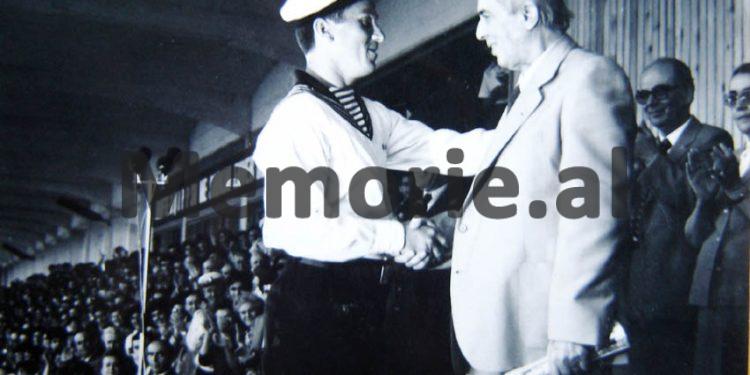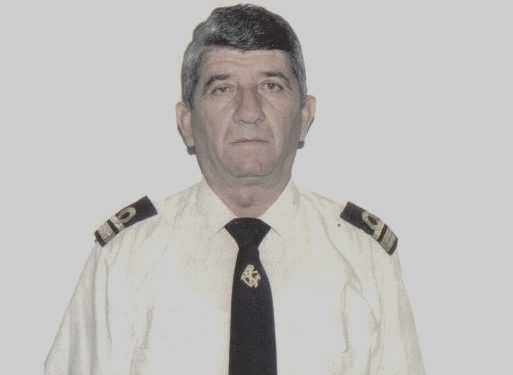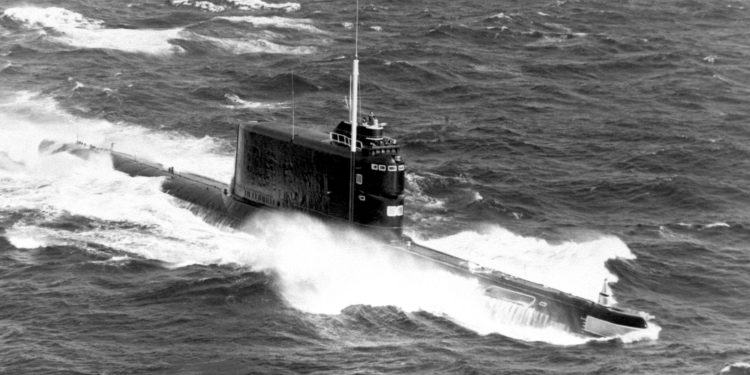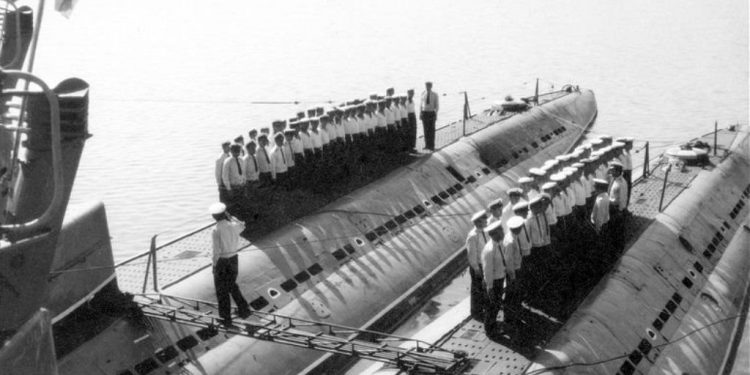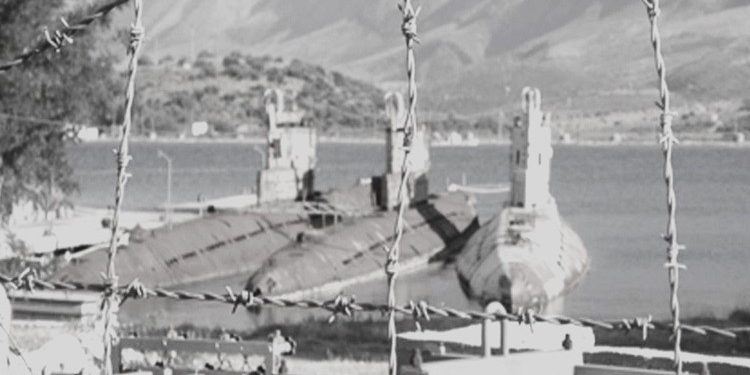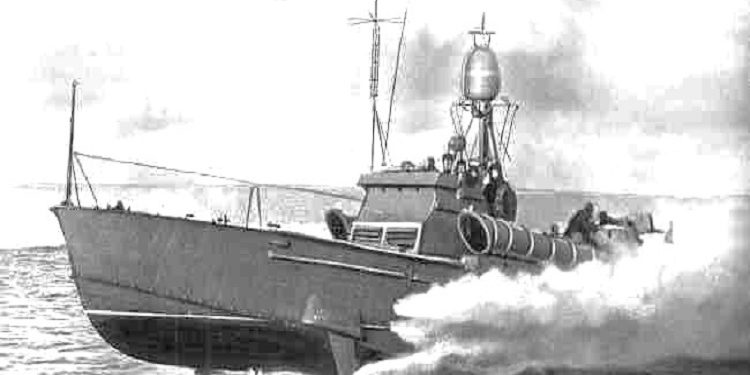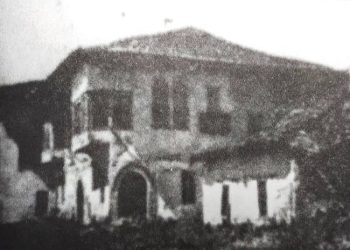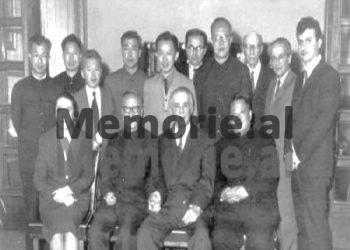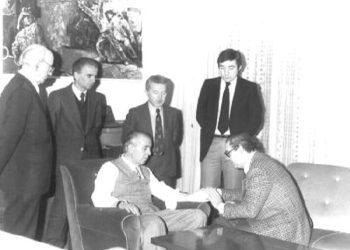Memorie.al/Agush Gjoni, now a retired colonel, recounts the events of October 13, 1981. As the commander of a large minesweeper in Sazan—the main vessel in this operation—he was involved in an 8-hour battle to neutralize a foreign submarine that remains an enigma even after more than four decades.
He served in the Naval Fleet for 30 years until his retirement in 1999. Since then, he has worked on transport ships on the Vlora-Brindisi line and vice versa, including the “Niobe,” “Skënderbeu,” and “Red Star.” He has transported 1.2 million passengers, 50,000 cars, and 300,000 trucks. His life is full of events and risks, but the one from October 13, 1981, remains a mystery today and, it seems, will become a legend over the years.
Agush, what do you remember about that day?
October 13, 1981, is a day that all of Vlora remembers, as do all the structures of the Army and Naval Fleet. It is a day that everyone remembers and that has left a great mystery behind. On October 13, 1981, a foreign submarine entered the Gulf of Vlora, which we detected with our equipment. At the time, I was the commander of a large minesweeper and was tasked with locating and identifying it, but we could not. We detected it at its discovery point, fought for 8 hours until it departed towards Kakome, and hit it several times, but it sustained no damage.
When did you detect that there was a foreign submarine in the Gulf of Vlora?
At midnight, as October 13 was dawning. A war alarm was issued throughout Albania. I was on Sazan Island, the commander of the minesweeper. The officers and sailors of Pashaliman, who were guarding the base, saw a submarine and reported to the Ministry that a foreign submarine had arrived.
Immediately, an order was given by Enver Hoxha: “Find the foreign submarine and report to me!” This order put Sazan on high alert, creating a state of panic among the Army forces. I was tasked with blocking the “Mexo-channel” between Karaburun and Sazan with the minesweeper, while a hunter was put on a search in the Gulf of Vlora. All batteries were on full alert, ready to act in any situation. We were at sea all night, on high-tension alert. The next day, at around 7:15 a.m., I was given the order (of course, this was an order from the Minister of Defense, Kadri Hazbiu) to remain on full alert, ready for battle. We had positioned ourselves at a depth of 80 meters. We were waiting for the order: “Open fire,” which could only be given by the Commander-in-Chief of the Armed Forces, Enver Hoxha.
Was the order to fight given?
It was 8:25 a.m. when I arrived at the designated location. The equipment showed that there was an object below us. We had the depth charges ready on both sides, just waiting for the order. We tracked the foreign submarine every minute, monitoring its movements. After a few minutes, we noticed that the object moved towards the first Ragusa, at a speed of 4-6 miles. After traveling two miles, we saw that it turned towards Ujë i Ftohtë, at a depth of 50 meters.
When it approached a sunken ship, it changed course and headed north of Sazan Island, increasing its speed to 14-15 miles. I ordered Prend Ndoj, the head of the ship’s generators, an excellent specialist, to set the engine to our maximum speed, 15-17 miles. When we approached Soda, the object changed course and began to leave the Gulf of Vlora at a speed of 20 miles.
Is it true that you were ordered to open fire on it?
Yes, it’s absolutely true, but this worried us a lot, as we didn’t have the speed to catch up to it. So I gave the order: “Set the speed to 17-19, let it burn, just follow the order, does your duty.” Surprisingly, it reached 18-19 miles, but this couldn’t last more than 1 hour, or the engine would burn out. Near Sazan, at 10:25 a.m., I received a two-digit radiogram: “Fire MMT.” It was the order of the Minister of People’s Defense. We maneuvered, drew up the plan, and I decided to fire with the right depth charge. “Fire!” I ordered. I had never been in this situation before; we were all shaken. Luckily, it fired very well, going to a depth of 70-80 meters, right at the target.
There was a terrifying underwater explosion, an earthquake with an indescribable noise. To everyone’s surprise, the object was not damaged. We re-established the signal on the object. The hunter would fire with a reactive, which was led by Kujtim Braçe. We continued the pursuit, the battle continued. We passed the Cape of Gjuhëz, heading south. We caught it near the Bay of the Bear (Gjiu i Arushës) and there I gave the order: “Fire” with the left bomb, using the same plan. Another terror that shook every cell of my body and mind. The strange thing was when we saw a giant fish, about 100 kg, which, right after the explosion, flew into the air and fell back into the sea. Small fish came to the surface by the ton.
Now we had the situation under control. Near Himara in Jalë, we caught the object again and got closer. Convinced that the “spy” submarine would finally be hit, I ordered both depth charges to be dropped. It was a super terror. We continued to remain on alert, while the object was moving at a speed of 17-18 miles, at a depth of 80 miles.
We continued to follow it, coming near Kakome. We fired again, hitting it again with both bombs. After this, our ship stopped moving, while the foreign submarine was heading towards Corfu. Our ship died, nothing worked, the engine, the electrical system… it turned off. That was its power; it could only be controlled with the mechanical steering wheel, which is a backup. Panic took over.
How did you act, what did you do in those moments?
Two helicopters came towards us, stopping in Saranda, which brought high officials from the Ministry of Defense, prosecutors, judges, and police. We were scared, as I thought I would be put in handcuffs, since the duty was considered unfulfilled. With a four-torpedo boat, the deputy ministers, the commander of the Fleet, and others came aboard the ship. They checked the documents and saw that everything was in order, that I and the crew had done our duty. They understood that the ship had stalled because that was its standard. I headed for Pashaliman, and the ship was put in for repairs. When the high officials left, we calmed down. The truth was that we had fought the battle, but it was left in the middle because of the minesweeper, which had that much power.
What happened after this situation?
The tension continued, it was suspected that other submarines might come. It was a difficult situation in Albania, as that event was followed by the suicide of Mehmet Shehu. After this, I stayed in the “Mezokanal” for 135 days. All the meetings were held there. We watched to see if other submarines would come. We watched day and night, and for this entire period, we were on war alert.
Was it clarified what this submarine was?
It was said that it was American, that it was nuclear-powered, and that it would blow up Vlora. These were just rumors, but in the eyes of the military, it seems that its mission was to attract attention, after the major event that had happened, the conflict between Enver Hoxha and Prime Minister Mehmet Shehu, which led to his suicide. We don’t believe it was nuclear-powered, as the rumors from the people claimed. I must clarify that nuclear-powered ships never enter the Gulf of Vlora; it is ruled out. It may have been a reconnaissance ship.
How is it possible that it was not specified?
These are great secrets that not everyone can know. It was easy to enter the Gulf of Vlora because the acoustics sometimes worked and sometimes didn’t. Nevertheless, we proved our fighting spirit; we killed the fear. I believe this submarine must have been a “Malutka,” a reconnaissance submarine, more for attracting attention from the situation that was being experienced, after the accusations against Mehmet Shehu.
I must emphasize the fact that I did not fight this “War” alone but with my staff. There was Vladimir Beja, who later became the Commander of the Fleet, Ylli, who became the commander of the Naval Military Base, Festim Tefa, the late Thoma Kote, the late Kujtim Braçe, and other officers.
That is an unforgettable day that never happened again and never will. For this reason, it holds an important place in the history of the Naval Fleet of the People’s Army Armed Forces.
Where is the minesweeper today?
The minesweeper completed its mission and is located in Durrës. I miss seeing it, so I look at photos I’ve taken of it from time to time. The photo you see is from the day of the battle. I am sorry that the Naval Fleet today still does not have a single modern minesweeper. Whether a country is powerful or not depends on the naval assets it has. At this point, we are a poor country. / Memorie.al




